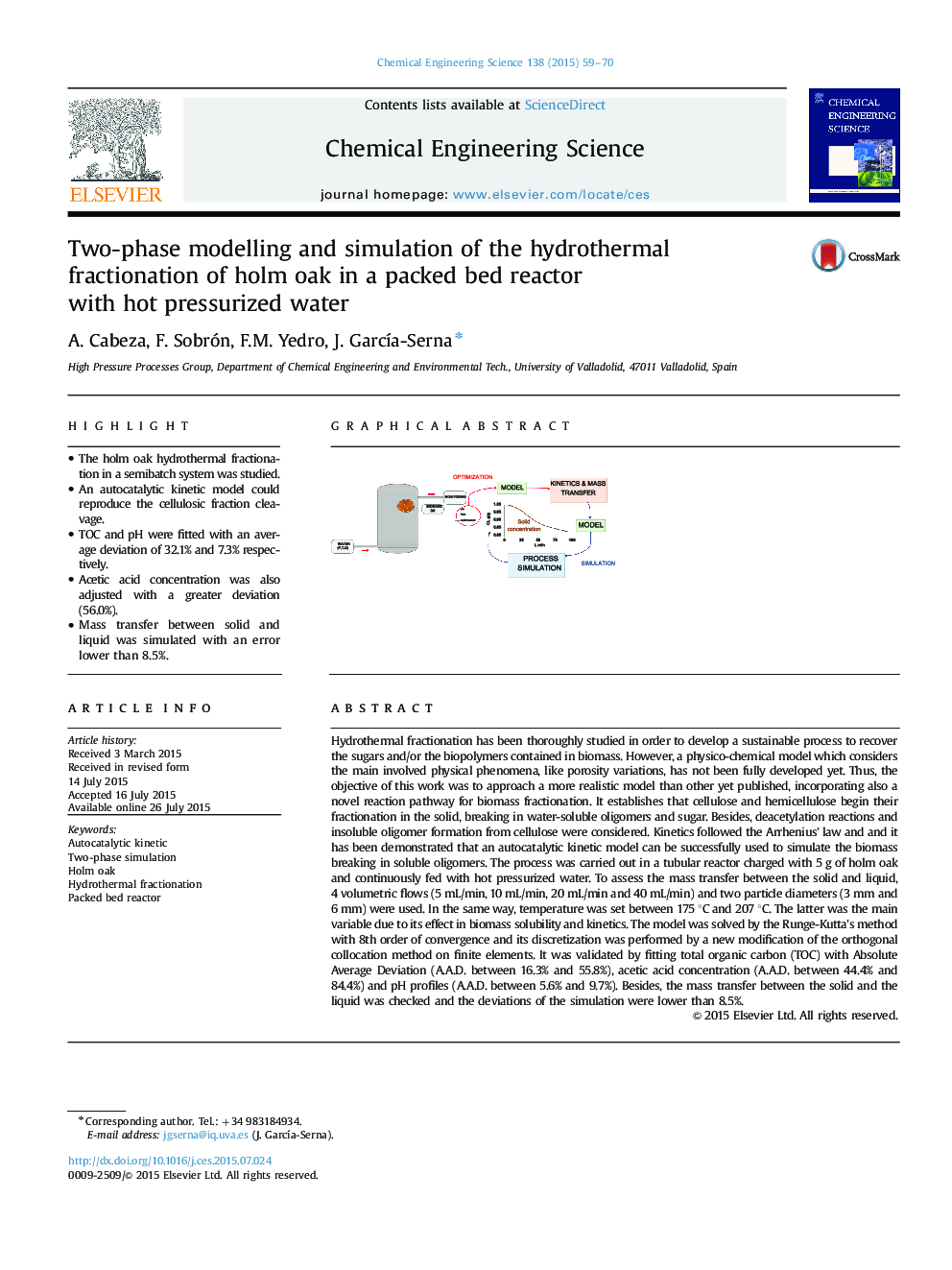| کد مقاله | کد نشریه | سال انتشار | مقاله انگلیسی | نسخه تمام متن |
|---|---|---|---|---|
| 154582 | 456846 | 2015 | 12 صفحه PDF | دانلود رایگان |
Highlight
• The holm oak hydrothermal fractionation in a semibatch system was studied.
• An autocatalytic kinetic model could reproduce the cellulosic fraction cleavage.
• TOC and pH were fitted with an average deviation of 32.1% and 7.3% respectively.
• Acetic acid concentration was also adjusted with a greater deviation (56.0%).
• Mass transfer between solid and liquid was simulated with an error lower than 8.5%.
Hydrothermal fractionation has been thoroughly studied in order to develop a sustainable process to recover the sugars and/or the biopolymers contained in biomass. However, a physico-chemical model which considers the main involved physical phenomena, like porosity variations, has not been fully developed yet. Thus, the objective of this work was to approach a more realistic model than other yet published, incorporating also a novel reaction pathway for biomass fractionation. It establishes that cellulose and hemicellulose begin their fractionation in the solid, breaking in water-soluble oligomers and sugar. Besides, deacetylation reactions and insoluble oligomer formation from cellulose were considered. Kinetics followed the Arrhenius׳ law and and it has been demonstrated that an autocatalytic kinetic model can be successfully used to simulate the biomass breaking in soluble oligomers. The process was carried out in a tubular reactor charged with 5 g of holm oak and continuously fed with hot pressurized water. To assess the mass transfer between the solid and liquid, 4 volumetric flows (5 mL/min, 10 mL/min, 20 mL/min and 40 mL/min) and two particle diameters (3 mm and 6 mm) were used. In the same way, temperature was set between 175 °C and 207 °C. The latter was the main variable due to its effect in biomass solubility and kinetics. The model was solved by the Runge-Kutta׳s method with 8th order of convergence and its discretization was performed by a new modification of the orthogonal collocation method on finite elements. It was validated by fitting total organic carbon (TOC) with Absolute Average Deviation (A.A.D. between 16.3% and 55.8%), acetic acid concentration (A.A.D. between 44.4% and 84.4%) and pH profiles (A.A.D. between 5.6% and 9.7%). Besides, the mass transfer between the solid and the liquid was checked and the deviations of the simulation were lower than 8.5%.
Figure optionsDownload high-quality image (189 K)Download as PowerPoint slide
Journal: Chemical Engineering Science - Volume 138, 22 December 2015, Pages 59–70
